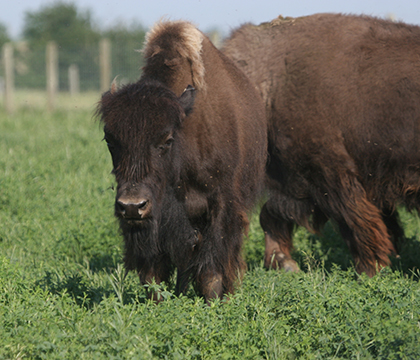
Producers must stay alert for anthrax
Government officials warn Saskatchewan livestock producers to stay on high alert for anthrax in animals after confirming a second outbreak of the disease in Saskatchewan this month.
By WCVM Today
Anthrax in a herd of cattle in the RM of Harris was confirmed July 28 via veterinary laboratory results. These results have confirmed anthrax was the cause of death in one cow. It is the suspected cause of death in two other cattle on the same farm.
Earlier this month several cases were confirmed in a bison herd northwest of North Battleford, Sask. On July 8, veterinary laboratory results confirmed that anthrax was the cause of death in two bison and is the suspected cause of seven more deaths in the same herd.
A case was also reported in cattle in the Fort Vermillion, Alberta area this week.
Anthrax is caused by Bacillus anthracis, a bacterium that can survive in spore form for decades in the soil. Affected animals are usually found dead without any signs of illness, so it's important to be aware of the cause and risks of anthrax.
During dry years, risk of exposure to anthrax increases when slough areas dry up and become accessible to animals. Spores can build up on pastures due to changes in soil moisture, such as from flooding and drying. These spores can concentrate in sloughs and potholes, and they can also surface after an excavation or when there is excessive run-off.
Livestock then become infected by eating forage contaminated with these spores.
Ruminants such as bison, cattle, sheep and goats are highly susceptible to anthrax. Horses can also be infected. Swine, birds and carnivores are more resistant to infection, but dogs and cats should be kept away from carcasses.
An anthrax vaccine can prevent the disease. Producers in regions where previous outbreaks have occurred, as well as those whose neighbours have experienced anthrax, should consider vaccinating their animals.
Carcasses of animals suspected of contracting anthrax should not be disturbed and should be protected from scavengers to prevent spreading anthrax spores in the environment.
Anyone who suspects anthrax should contact a veterinarian immediately for diagnosis. Tests are confirmed by laboratory diagnosis. All positive results must be immediately reported to the province's chief veterinary officer.
Animal cases pose minimal risk to humans, but people can become infected through direct contact with sick animals or carcasses. Producers are advised to use caution when handling potentially infected animals or carcasses.
In cases where humans suspect they have been exposed to an infected animal they should contact their local health authority or physician.
More information on Saskatchewan Agriculture's anthrax response plan can be found at: http://www.agriculture.gove.sk.ca/anthraxresponse.
Earlier this month several cases were confirmed in a bison herd northwest of North Battleford, Sask. On July 8, veterinary laboratory results confirmed that anthrax was the cause of death in two bison and is the suspected cause of seven more deaths in the same herd.
A case was also reported in cattle in the Fort Vermillion, Alberta area this week.
Anthrax is caused by Bacillus anthracis, a bacterium that can survive in spore form for decades in the soil. Affected animals are usually found dead without any signs of illness, so it's important to be aware of the cause and risks of anthrax.
During dry years, risk of exposure to anthrax increases when slough areas dry up and become accessible to animals. Spores can build up on pastures due to changes in soil moisture, such as from flooding and drying. These spores can concentrate in sloughs and potholes, and they can also surface after an excavation or when there is excessive run-off.
Livestock then become infected by eating forage contaminated with these spores.
Ruminants such as bison, cattle, sheep and goats are highly susceptible to anthrax. Horses can also be infected. Swine, birds and carnivores are more resistant to infection, but dogs and cats should be kept away from carcasses.
An anthrax vaccine can prevent the disease. Producers in regions where previous outbreaks have occurred, as well as those whose neighbours have experienced anthrax, should consider vaccinating their animals.
Carcasses of animals suspected of contracting anthrax should not be disturbed and should be protected from scavengers to prevent spreading anthrax spores in the environment.
Anyone who suspects anthrax should contact a veterinarian immediately for diagnosis. Tests are confirmed by laboratory diagnosis. All positive results must be immediately reported to the province's chief veterinary officer.
Animal cases pose minimal risk to humans, but people can become infected through direct contact with sick animals or carcasses. Producers are advised to use caution when handling potentially infected animals or carcasses.
In cases where humans suspect they have been exposed to an infected animal they should contact their local health authority or physician.
More information on Saskatchewan Agriculture's anthrax response plan can be found at: http://www.agriculture.gove.sk.ca/anthraxresponse.
